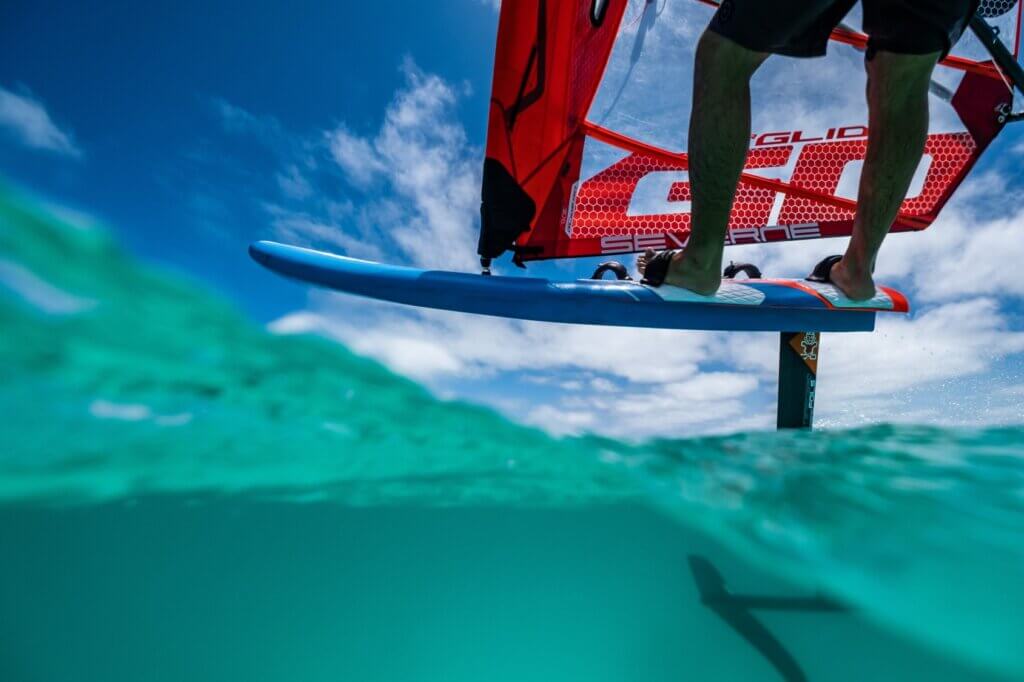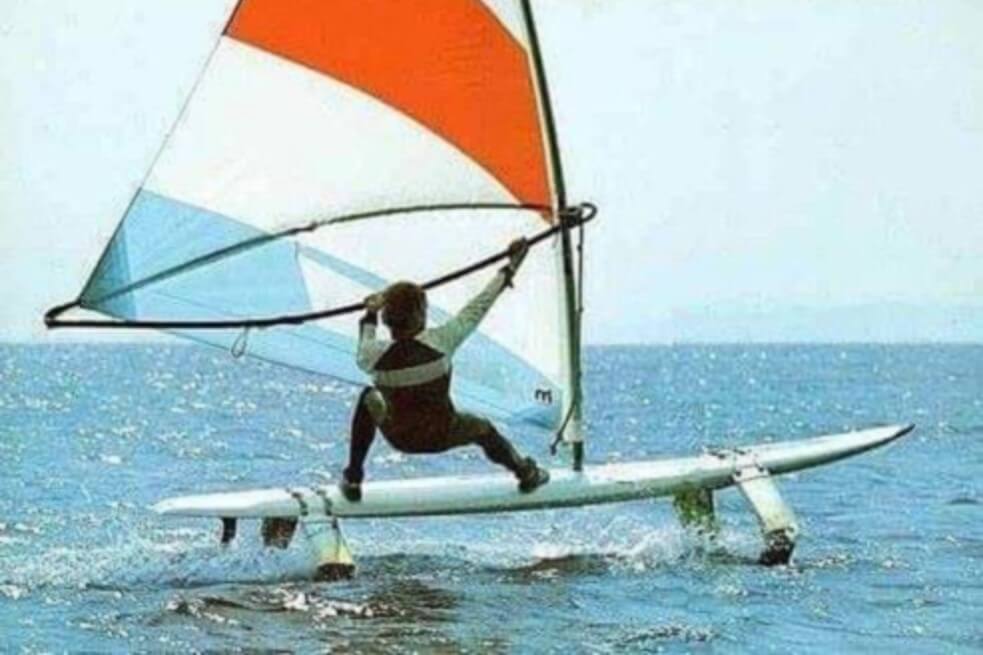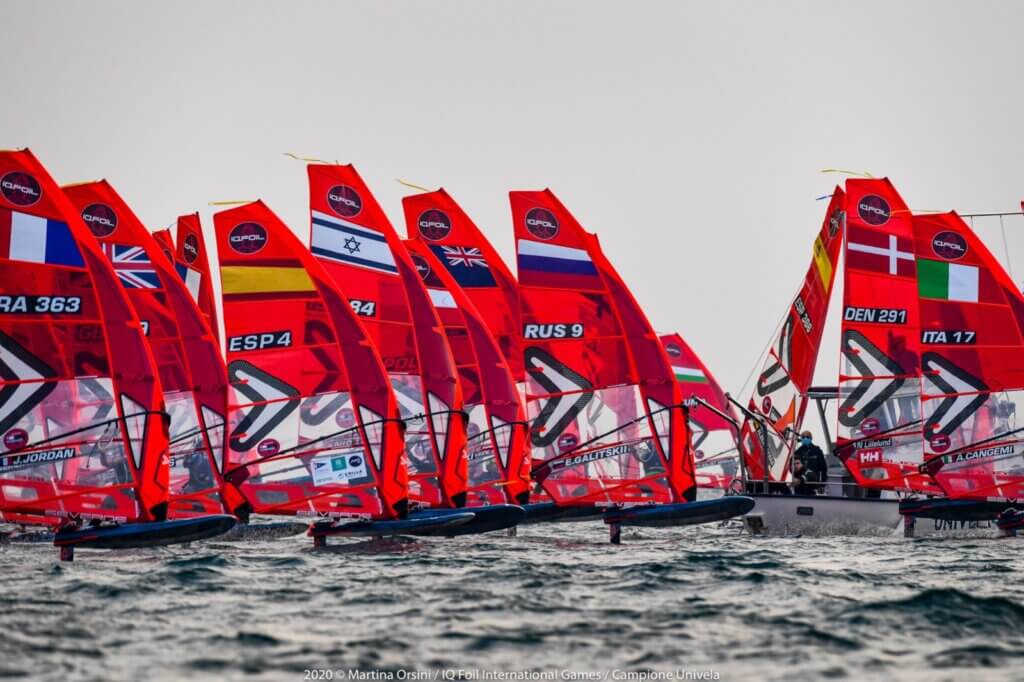
What is wind foiling?
Wind foiling or hydrofoiling is a new form of windsurfing, in which the windsurfing board floats about 50 cm above the water instead of over the water.
The wind surfboard will float through a wing structure called the wind foil, which is attached under the wind surfboard. The operation of the wing construction is similar to the wings of an aircraft.
From about 20 km/h, the upward force of the wings ensures that the surfboard is lifted up.

Wind foils new and yet not
You may not have encountered a wind foiler (or hydrofoiler) on the water, but it’s been around longer than you think. In the early 80s, experiments were already being carried out with hydrofoiling. The then still meters long planks that had a construction that was most reminiscent of a hydrofoil. Over the years, wind foiling has been a bit of an ‘underground’ thing.
However, since 2017, the major windsurfing brands have been seriously working on the development of the wind foils that are now for sale. This acceleration in development has everything to do with the general trend towards (hydro) foiling within water sports. This has even led to wind foiling from 2024 onwards to become Olympic!

Wind foiling the Olympic standard from ’24
The biggest advantage of the wind foil is that with very little wind (< 8 knots) you can already organize a very nice race. Due to the much lower resistance, a wind foiler goes much faster with little wind. Due to its relatively high speed, a wind foil creates more ‘sailing wind’ than a regular surfboard with little wind. As a foiler, you quickly get a lot more pressure in your sail than in just windsurfing. This makes wind foiling with much less wind more attractive to do and to watch.
iQfoil the concept of Starboard/Severne will be the standard at the Olympic Games from 2024, this was decided in November 2019. From 2020, various one design classes worldwide will be ‘rigged’ with the iQfoil to further develop wind foiling and to further boost the competitions. To know more about the iQfoil and what it costs, read the article just in it all prices.
New requirements for wind foiling material
We are on the cusp of a whole new revolution in windsurfing. Although you still need a board and a sail, wind foiling requires other properties of the material than a windsurfset with which you simply plan. Think about it;
- Lots of volume and wide back of the boards for fast foiling and stability during foiling
- Plenty of scoop in the nose to avoid a catapult during so-called ‘nosedrops’
- Custom foot strap positions, because your right is on your board and hangs more forward
- Lighter sails, cut for low-end speed
- Use much smaller sails (approx up to 8 m2)
- The cut of sails also changes, because you have a different stance on your board
Formulaboards & light weather slalom boards ideal for starting with
Yes a lot changes to the surf material, but from experience we know that formula boards and light weather slalom boards are ideal for wind foiling. This is because these boards already have the most important properties mentioned above. A board wider than 80-85 cm is basically suitable to start with wind foils, at least if this board has a deep tuttlebox. Marketplace is full of it. Under €500, – you can sometimes buy an old formula board.
Fin box not strong enough
You can imagine that there are a lot of forces on the fin box during wind foils. A deep tuttle box is already stronger than a regular fin box, but still the fin boxes in the new boards are reinforced extra. The fin cabinets of formula boards are generally strong enough to make a good start with the wind foiling. Does the box break down, you might consider having your board repaired and having an extra reinforced box installed.
Wind foiling you really have to learn
For most people, it takes a while before they get the hang of wind foiling. The biggest challenge is to find your balance in the air. A normal board remains stable due to contact with the water. With wind foils, this contact is no longer there. You literally hang on your fin almost 1 meter above the water. Steering works many times more extreme than with a normal board. A small movement creates a great effect. Read more about this on the page ‘Learning wind foiling’.


